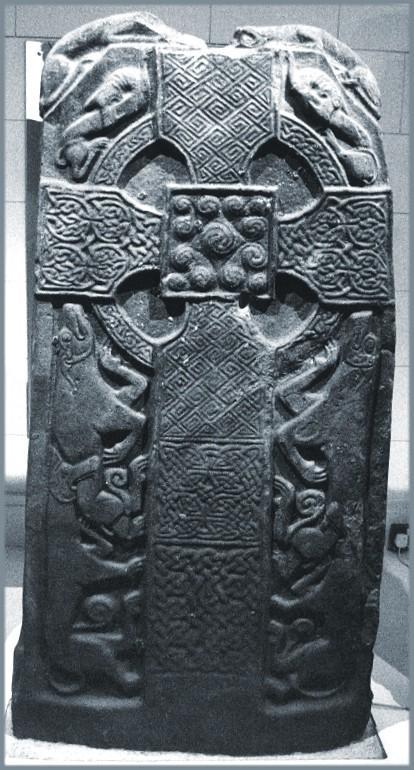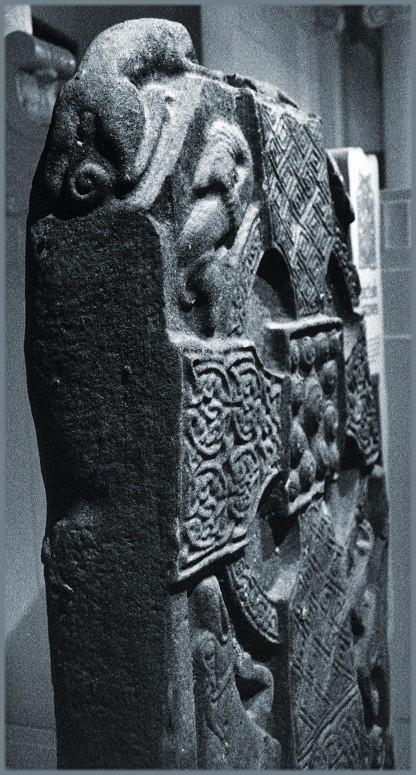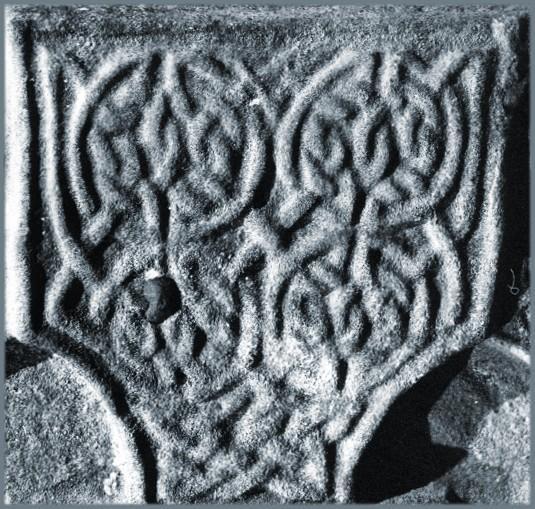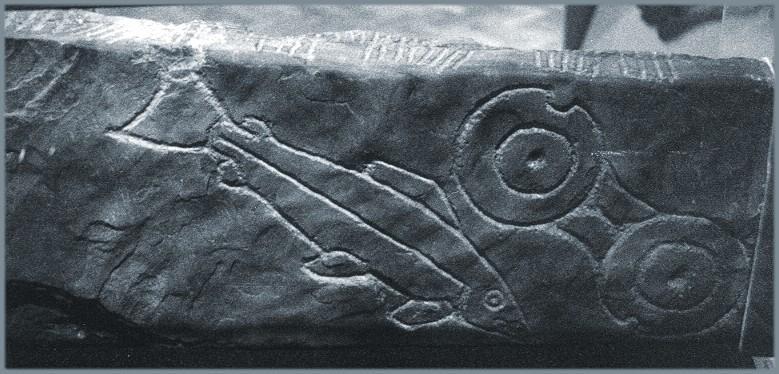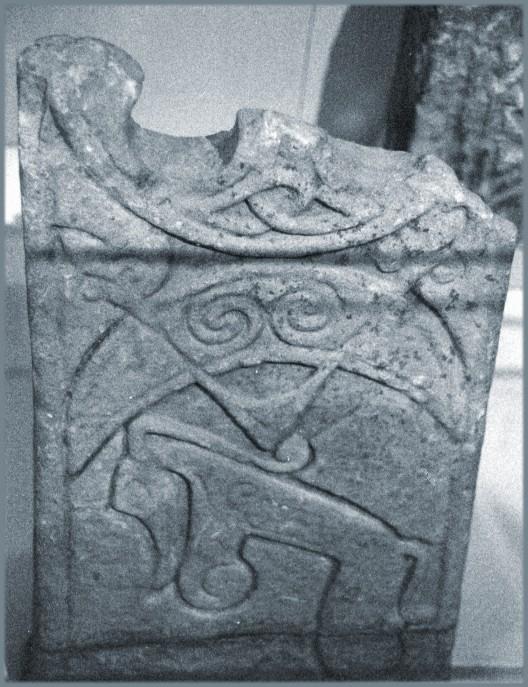Perth Museum has three fine and interesting pictish stones on display. Unfortunately, the display leaves a bit to be desired.
St Madoe's
The splendid St Madoe's slab is a beautifully carved class II stone.On the top edge of the slab are two animals, possibly dogs. The cross is divided into panels of varied interlace and key patterns.
Either side of the top of the cross is a dog biting its own back.
Either side of the shaft of the cross are pairs of dogs.
The rear of the stone is poorly displayed, only being visible reflected in a mirror on the back wall. It is divided into six panels showing horsemen, a double-disc and Z-rod, a crescent and V-rod, and a pictish beast.
Inchyra
The Inchyra slab was found by ploughmen in 1945 and was one of several slabs covering a burial. On both sides are sharply incised symbols: a salmon and double disc on one side, a salmon and serpent on the other. On the same side as the salmon and double disc, there are markings for a mirror and sword, but these are unfinished. There are also three ogam inscriptions on the slab.Again, the display is less than ideal - the glass case and bright lights make parts of the slab hard to see, and one end of the case is between other cabinets and inaccessible.
